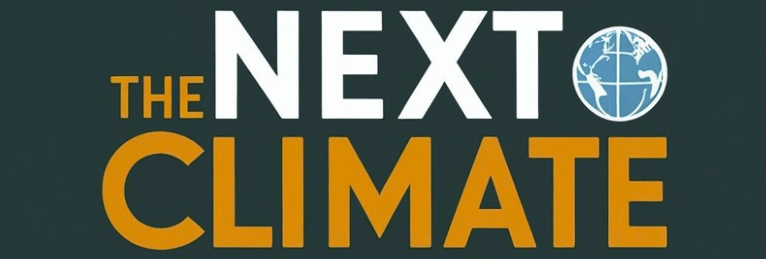The Ozone Hole Is Shrinking – A Reason to Rejoice?
4 min read
On September 16, 2025, we received encouraging news: The ozone hole continues to shrink! The World Meteorological Organization (WMO) reported that in 2024 the ozone hole was significantly smaller than in previous years. This confirms the effectiveness of the measures decided 40 years ago in the Vienna Convention and later enshrined in the Montreal Protocol of 1987. What this means for us—and why we still cannot afford to sit back—is the focus of this article.
Why the Ozone Layer Matters
The ozone layer, located about 15 to 30 kilometers above the Earth’s surface, shields us from the Sun’s harmful ultraviolet (UV) radiation. When it becomes thinner, the risk of skin cancer, eye diseases, and genetic damage increases. In 2000 and 2015, the ozone hole reached record sizes. Yet recent reports show: the ozone layer is recovering.
What the latest report reveals
The WMO reports that the ozone hole was smaller in 2024 compared to the years before. This progress is due to decades of international cooperation and agreements: the Vienna Convention (1985), the Montreal Protocol (1987), and later the Kigali Amendment. These agreements led to a 99% reduction in the production and use of key ozone-depleting substances such as CFCs.
If current measures continue, scientists expect the ozone layer to return to pre-1980s levels by the middle of this century, around the 2060s. Still, natural fluctuations—like changes in weather patterns, stratospheric temperatures, or the Brewer-Dobson circulation—can cause short-term setbacks.

Figure: Historical and projected development of the ozone layer over the South Pole, showing the reduction of the ozone hole (e.g., comparison between 1971, 2017, and 2041).
Positive Impacts
The benefits are evident in health protection. Stronger UV protection reduces the risk of skin cancer, eye diseases (e.g., cataracts), and DNA damage. People living in sunny regions benefit especially.
Our ecosystems and agriculture also gain positive effects. Animals, plants, and aquatic life are sensitive to UV radiation. A more stable ozone layer protects biodiversity and agricultural yields, particularly in high-altitude and tropical regions.
Now is the right time to recognize the signal effect of global cooperation, since the success of these agreements shows that international politics and science can act effectively together. This strengthens trust in multilateral climate and environmental treaties.
Challenges and Limits
Despite the positive developments, we must not overlook the limitations of the recent developments. On the one hand, the regeneration process is slow and still carries risks. Although the direction is right, full recovery will take decades. In regions with unfavorable atmospheric conditions, ozone loss can still occur.
Natural fluctuations also play a role. Weather phenomena, temperature changes, or atmospheric circulation patterns can cause temporary setbacks. Some studies warn that, for example, a slowing Brewer-Dobson circulation could delay recovery.
Finally, it is important to remember that the lessons cannot be fully transferred to CO₂ climate protection. The mechanisms behind ozone depletion are chemically clearer and easier to target than many CO₂-related problems. In the case of CO₂ or methane, the sources are far more diverse, harder to regulate, and deeply embedded in the economy and infrastructure.
The Next 5 Years: Staying on Track?
In the coming five years, it will be crucial to consolidate the progress made so far. This means, above all, ensuring that international agreements such as the Montreal Protocol and its amendments need to be strictly enforced and monitored. Only then can we prevent illegal emissions or negligence from jeopardizing past achievements.
Equally important is the continued expansion of monitoring and measurement systems. Modern satellites and ground stations provide data that help detect unusual developments early and produce more accurate forecasts. In connection with this, research into atmospheric processes should be intensified. Particular attention should be given to the interactions between ozone, climate change, and large-scale circulation patterns such as the Brewer-Dobson circulation, so that we can respond more effectively to unpredictable events.
In addition, communication plays a central role. The success of ozone protection is a strong symbol of the effectiveness of international cooperation—an example that should be more widely used to inspire people around the world to take climate action. Finally, ozone and climate protection should be more closely linked: measures such as replacing harmful refrigerants with climate-friendly alternatives or developing energy-efficient cooling technologies have positive effects in both areas.
If these points are addressed decisively, the recovery of the ozone layer can not only be secured but also serve as a model for tackling other global environmental challenges.
Conclusion
The development of the ozone layer is a prime example of how science-based international action can be effective. After decades of damage, the data now show that the ozone hole is shrinking—and at a pace that, provided the measures remain in place, could restore protection to levels similar to those before the 1980s.
Over the next five years, it will be vital to stay consistent, strengthen global agreements, expand research and monitoring, and use these successes as motivation for addressing other pressing environmental and climate challenges.
Additional Resources
Zum aktuellen WMO Bericht “WMO Ozone and UV Bulletin No. 3 – September 2025“
APA – 40 Jahre Wiener Konvention zum Schutz der Ozonschicht, 15.9.2025
ORF – Das Ozonloch schrumpft weiter, 16.9.2025
WMO – WMO Bulletin shows recovery of ozone layer, driven by science, 16.9.2025
ARD ALPHA – Klimawandel fördert den Ozonloch-Effekt, 21.4.2023
Copernicus.eu – OBSERVER: Evolution of the Ozone Hole 1979 to 2021, 30.3.2023
UN – 2025 Theme: International Day for the Preservation of the Ozone Layer, From science to global action
